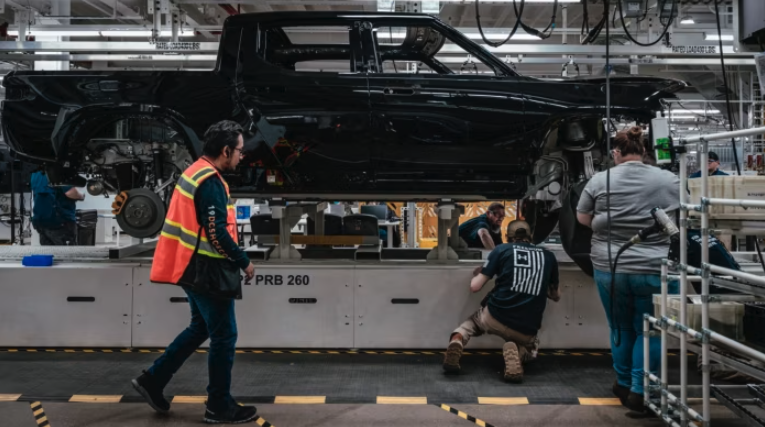AMERICA
US-Europe productivity gap widens

The US overtaking Europe in productivity has fuelled fears that the EU is facing a ‘competitiveness crisis’, with policymakers calling for more public and private investment.
New data released on Friday showed that productivity in the eurozone fell by 1.2 per cent in the fourth quarter from a year earlier, while in the US it rose by 2.6 per cent over the same period, the Financial Times reported. Labour productivity growth in the US has been more than double that of the eurozone and the UK over the past two decades.
Bart van Ark, chief executive of the UK-based Productivity Institute, said: “In the long run, productivity growth in the US is expected to be higher than in Europe. Europe is not showing the same dynamism. This is widening the growth gap between the US and the EU,” said Bart van Ark.
Some economists argue that the US is growing faster than the eurozone partly because its population is younger, growing faster and working longer hours. But much of the output gap is due to the fact that people in the US produce more for every hour they work.
According to the FT, EU policymakers see this trend as deeply worrying and a reflection of a long-standing failure to catch up with US levels of private and public investment.
US worker productivity outperforms EU
Output per hour worked, a standard measure of labour productivity, has increased by more than 6 per cent in the US non-farm business sector since 2019, according to official data. This outpaces the eurozone and the UK, which grew by around 1 per cent over the same period.
In contrast to the ‘green’ stimulus in the US, the Eurozone has received less fiscal support from governments and has experienced a much larger rise in energy prices as a result of the war in Ukraine. The fragmentation of Europe’s financial markets, fiscal policy and regulation also makes it more vulnerable to external pressures than the US.
While there is no doubt that short-term factors have fuelled the US recovery, some economists say there is more to it. Gilles Moëc, chief economist at insurance company Axa, said: “Productivity in the eurozone has stalled. Now that the recovery has been going on for so long, we have to think about the possibility that something structural is going on,” said Gilles Moëc, chief economist at insurance company Axa.
Moëc estimates that if eurozone productivity continues to lag the US by the same amount, GDP growth will be one percentage point lower each year.
European Central Bank (ECB) executive board member Isabel Schnabel said last month that it was “more urgent than ever” for eurozone leaders to close the productivity gap with the US.
This is needed to tackle the “competitiveness crisis” as EU producers face higher energy prices and greater labour challenges than their American or Chinese counterparts, Schnabel said.
The ECB is also weighing when to cut record-high interest rates amid fears that falling productivity will increase labour costs for eurozone companies, raising the risk that inflation will remain high.
Schnabel said one of the main reasons for the eurozone’s weakness was its failure to capitalise on productivity gains from digital technologies, as the US did earlier. Schnabel said that promoting competition will be part of the solution, and called for faster and more effective implementation of the EU’s Next Generation Public Investment Programme.
Mario Draghi, the former head of the ECB, will report to the EU president later this year on more ambitious proposals to boost the EU’s competitiveness. Draghi is reported to have told the bloc’s finance ministers that they would need to find ‘enormous amounts of money, both public and private, in a relatively short period of time’ to boost investment to US levels.
EU decline is temporary, some economists say
However, not all economists are convinced that the recent US strength is evidence of a structural shift.
Erik Neilsen, chief economist at UniCredit, argues that the current weakness in the eurozone is a ‘statistical phenomenon’, as employers who struggled to hire in the post-credit upswing are now hoarding labour in the downturn. In his view, productivity could recover as the ECB’s tight policy squeezes demand until workers are eventually laid off.
Catherine Mann, an outside member of the Bank of England’s monetary policy committee, also told the FT last month that while US labour productivity figures look ‘very attractive’, they are driven by demand factors, notably a budget deficit of over 6%.
By contrast, demand is more subdued in the eurozone and the UK, where the economy entered a technical recession in the fourth quarter.
Claus Vistesen of Pantheon Macroeconomics said there were reasons to be optimistic about European productivity. “If we are indeed on the verge of a new technology-driven productivity boom centred on artificial intelligence and related services, it would be very pessimistic to assume that it will bypass the eurozone altogether,” Vistesen said.